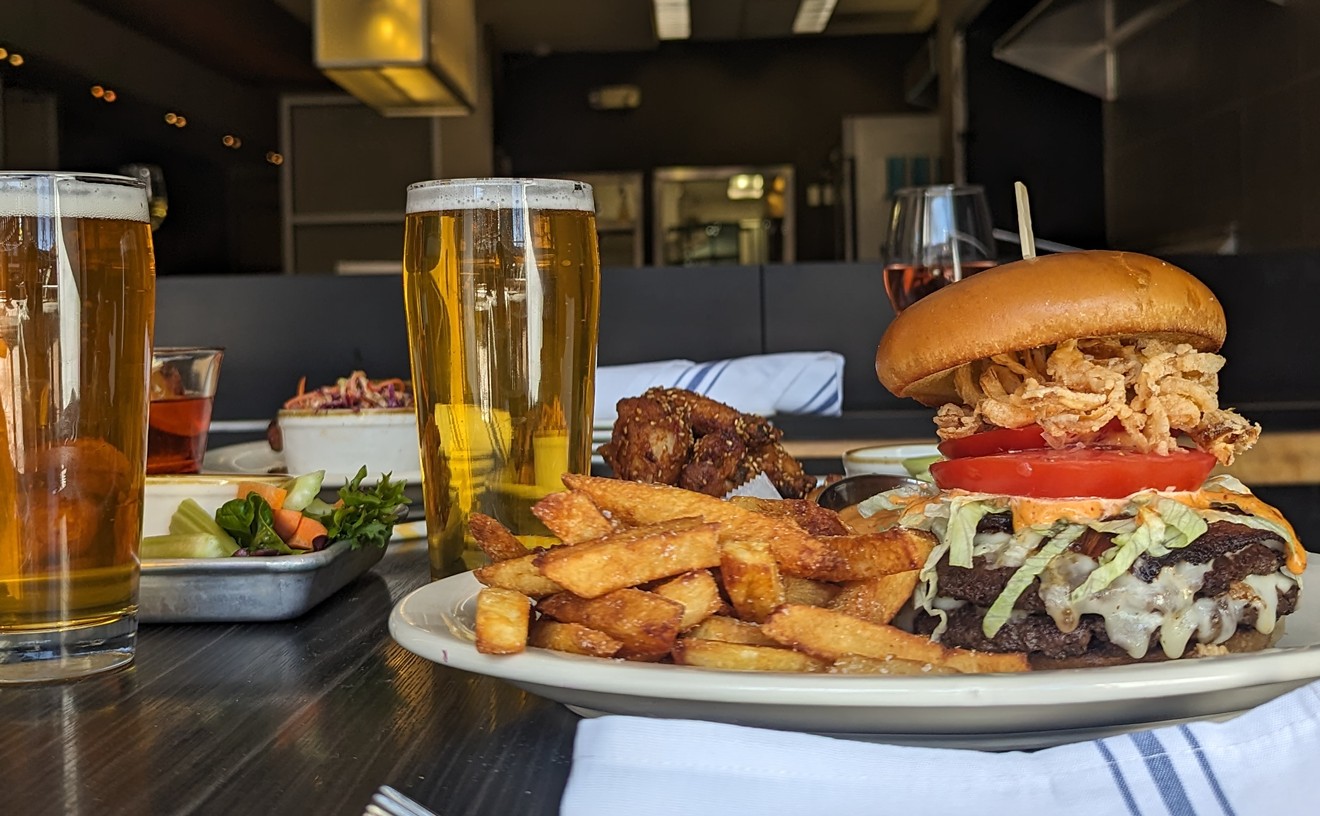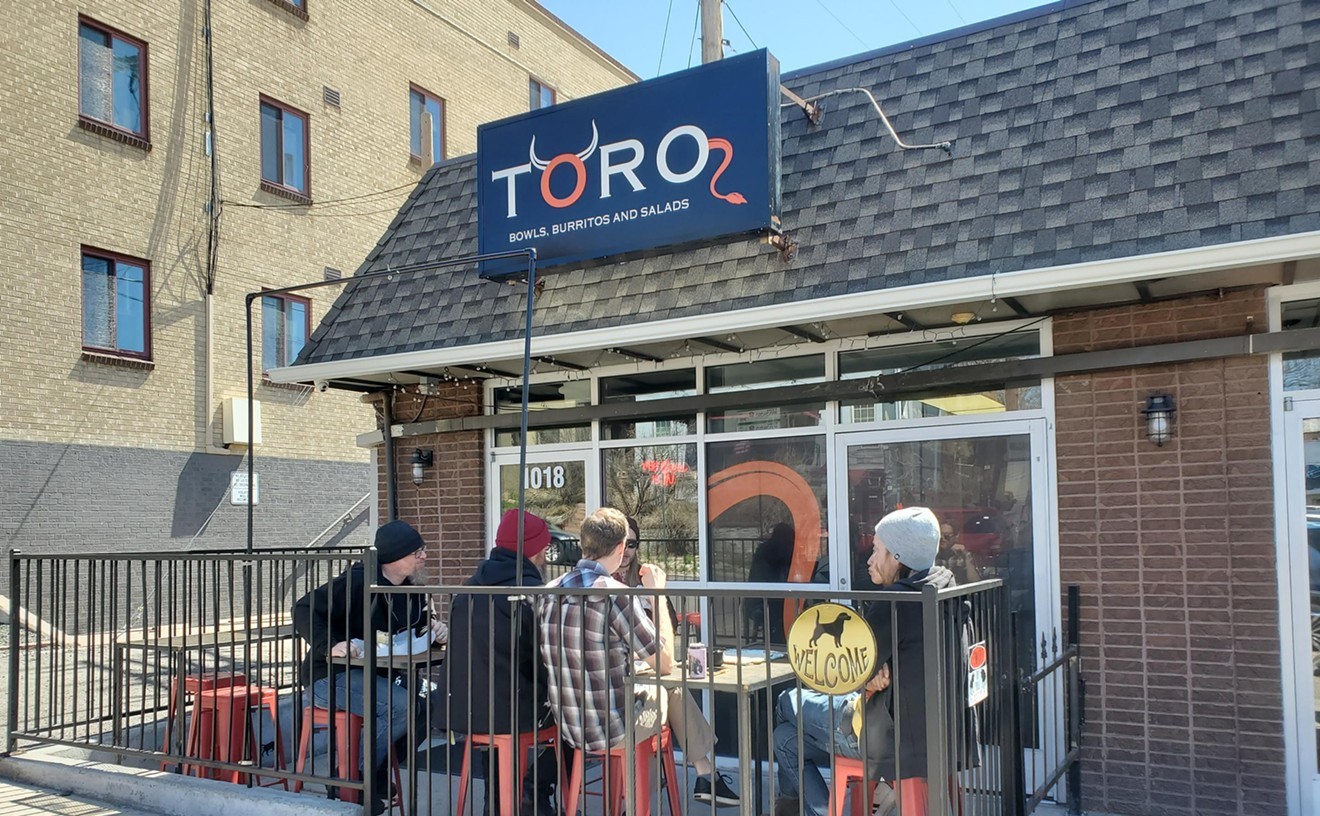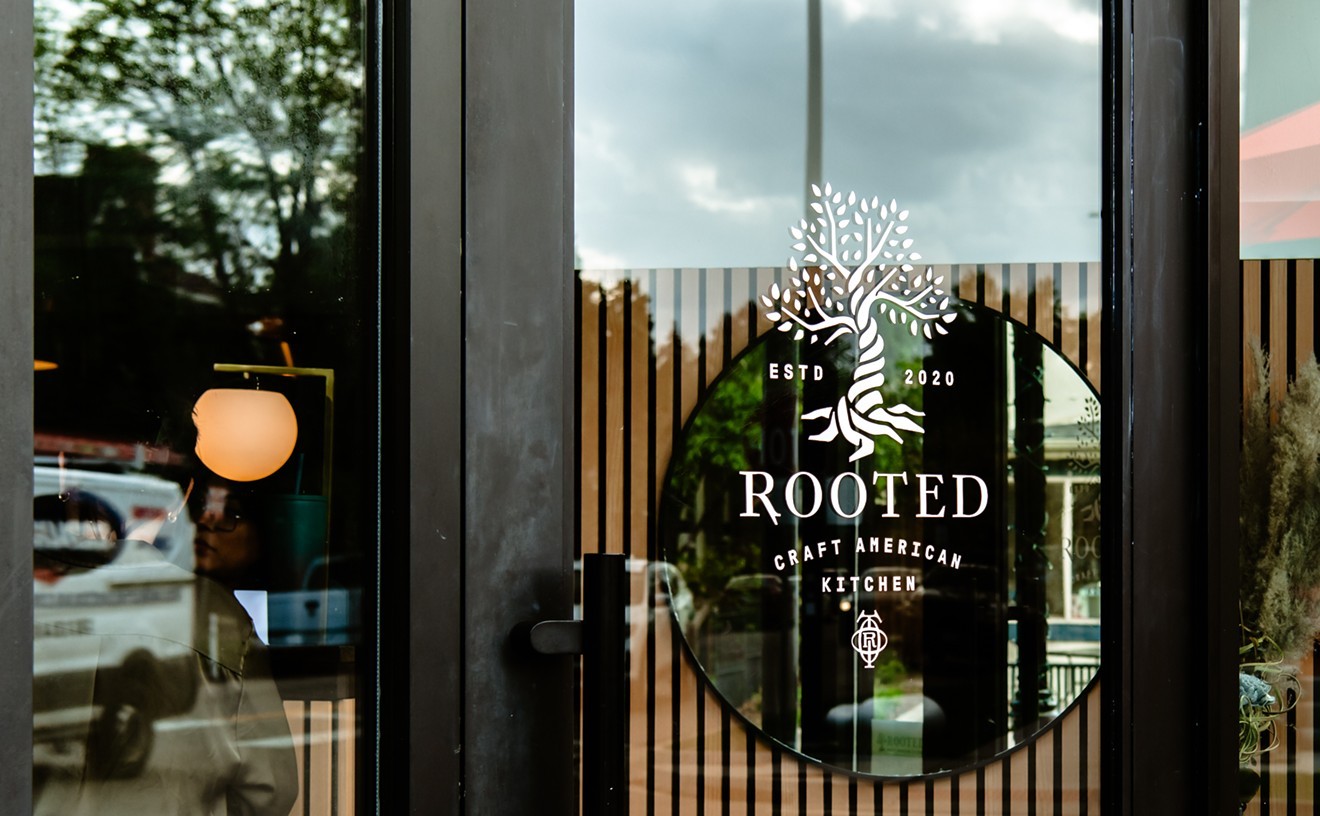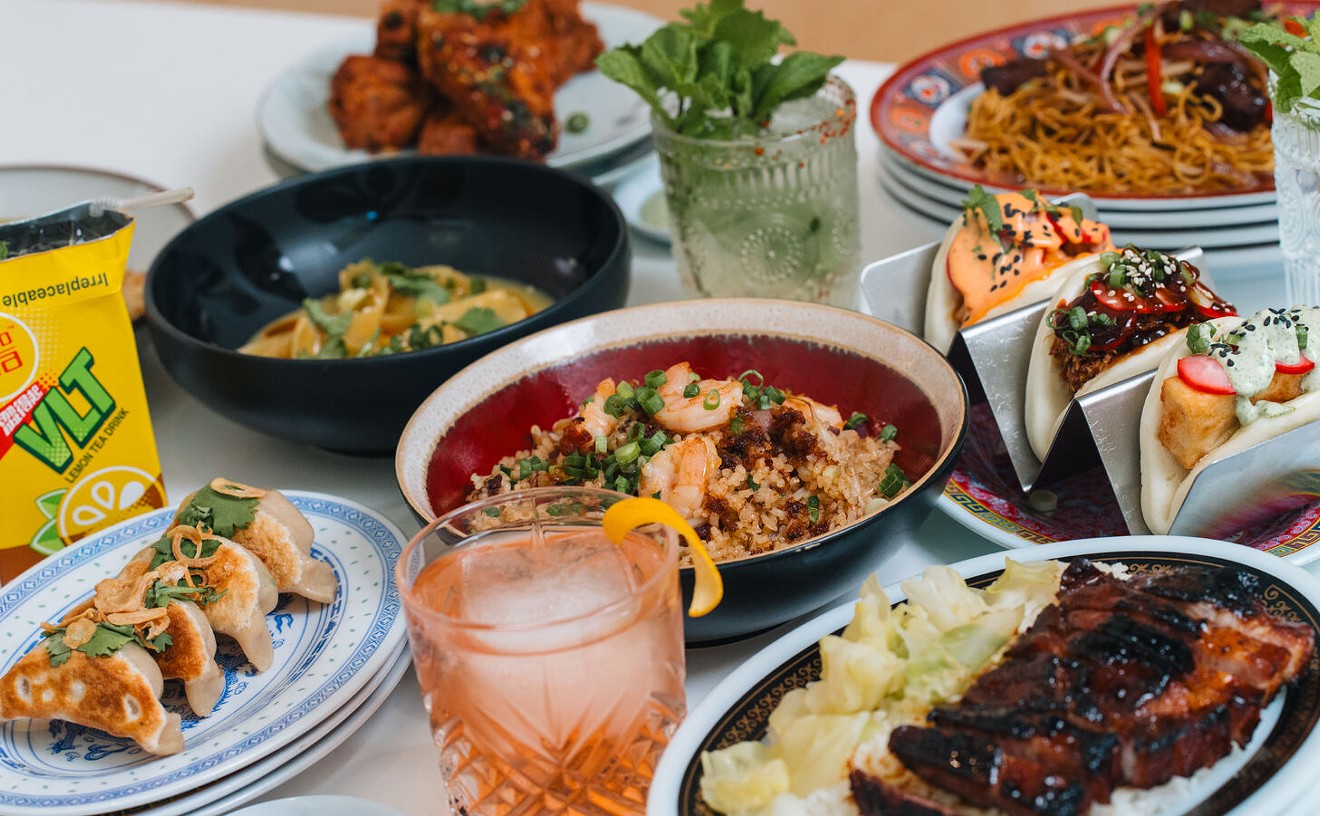Right now, Mazzio is in full bloom.
His father was a caretaker for the Campbell's Soup estate in Gladwyne, Pennsylvania, and Mazzio was raised eating the fruits and vegetables that grow in abundance in that humid climate. "That was amazing, because I could cook with foods that had literally been pulled right out of the ground and went right into the pot," he says. "Cooking here can be a little dicier, not so much because I can't get stuff, but because of the quality. So I have to be pickier, pick and choose more what I can really use. But that's only for three or four months. Now we're starting to get better again, because Southern California's growing season has started. So when the skiing is done, the food gets better."
And this from a guy who left Pennsylvania -- after stints as a fish cleaner and managing a seafood company outside of Philadelphia -- to be a ski bum here. Mazzio settled in Aspen and got an off-the-slopes job at Mezzaluna, starting as a busboy and working his way up to line cook and sous chef. He started getting serious about cooking in 1991, when Charles Dale took him on as an intern at Renaissance; Mazzio's talents soon earned him a spot as the esteemed Aspen eatery's chef de cuisine. And by the time he'd moved on to his first role as top toque, at Boulder's 15 Degrees, Mazzio rated recognition from Food & Wine as one of America's top ten best new chefs.
That was in 1999. Now Mazzio is a partner in the six-month-old Triana, along with Doug Clayton, who's managed Miami and Napa restaurants as well as Aspen's Caribou Club; Scott Lockwood, a former NFL running back whose travel in Spain provided the impetus for the restaurant; and Adam DeVito, who helped open revered cooking instructor Madeleine Kamman's school. The group brought in Adue Interiors to implement a sumptuous decor that combines stark bullfighting art with serene stone walls and is warmed by lighting that flickers almost cavelike in the dining room. Gauzy curtains hang over the over-the-head-high booths for surprisingly intimate dining, even though all of the booths face the room. The adjacent bar is fabulous looking, with polished chrome reflecting the bold colors all around. And the beautiful people: On weekends, both the dining room and the bar are packed. They aren't there just to be seen in Boulder's hippest scene, either. They're there to eat some of the area's best food, creative combinations full of intense flavors.
Rather than offer a sampling of Mediterranean foods, Triana concentrates on one cuisine, that of Spain. It's a cooking style noted for its simplicity, created by a people noted for their dedication to ingredients: the more expensive and luxurious, the better. The restaurant's name refers to the barrio in Seville that's often credited with the invention of tapas, and in keeping with that, Triana offers many snacking options. Never before has an order of French fries been so slyly presented, stuffed into a cardboard cone set in a decorative metal holder. But these shoestring-style spuds sprinkled with sugar and salt were worthy of their presentation: Addictive doesn't begin to describe the allure of the crispy edges, soft centers and little bits of salty caramelized sweetness that came with every bite. The fries didn't even need the romesco dipping sauce, although we did find that the traditional Spanish red-pepper concoction went well with Triana's homemade baguette slices.
Another cone arrived overflowing with clam strips, oh-so-tender shreds that had been lightly breaded and deep-fried, and paired with a lemon aioli dipping sauce. The salmon margarita boasted another innovative presentation: Papery slips of delectable fish had been cured, ceviche-style, in a tequila-spiked lime liquid augmented with onion, then served in a margarita glass rimmed with pepper. Although other tapas offerings were more straightforward in appearance, they were no less impressive: thin slices of eggplant layered with aged goat cheese (for a sharp, rather than rich flavor), a roasted-tomato vinaigrette that was like a sassy version of grandma's marinara and flawlessly grilled shrimp wrapped in sweet smoked bacon and served with a creamy emulsion made from crushed almonds.
For grazers, the urge is almost overwhelming to head straight to the bar and snack there all night -- pairing the foods, in true Spanish style, with a few glasses from Triana's intriguing list of Spanish wines and sparkling cavas. But while Triana heartily encourages such activity, no one should miss the experience of dinner in the dining room, nestling into one of the cozy booths and surrendering to Mazzio's headier, more involved dishes. If there is anything more intensely flavorful than his gazpacho, I haven't tasted it: Ripe tomatoes, peppers -- we have Spain to thank for those, by the way -- and cucumbers had been puréed into an absolutely fresh soup, with a few grilled shrimp added for contrast and some avocado for extra vegetal richness and color. The lobster bisque with corn cakes and poached lobster had that same essential freshness, with just enough cream and a touch of fennel to underscore the sweet lobster meat.
Using just one or two ingredients to coax out flavor is a forte of Spanish cooking and, not coincidentally, also a real skill of Mazzio's. In fact, the kitchen is so sure of itself that there are no salt and pepper shakers on the table -- an intentional omission that would seem presumptuous in any other restaurant but here conveys a sense of confidence (and makes the streamlined room look even cooler). Servers will bring seasonings if you ask, but if you need something beyond the flavor barrage that arrives with each plate, you're missing the point. And so a seemingly uncomplicated piece of snapper arrived swimming in what looked like a watery tomato broth, but appearances were deliciously deceiving: The ripe tomatoes had been smoked and then sharpened with shallots, which spiked the taste of the snapper's rich, oily flesh. The fish itself had been fried until the skin turned into a crispy, crackly and salty delight. An otherwise austere piece of broiled Atlantic cod was smartly matched with porcini mushrooms (porcini is the Italian word for a bolete mushroom, known for its meaty texture) that gave the cod body; a side of downy sage-permeated potato dumplings was the perfect light match for the moist fish.
As if he didn't have enough going on with the main courses, Mazzio is also doing his own pastry work right now. (Sous chefs Melanie Simpson and Corey Smith lend their talented hands in the kitchen.) And so we couldn't skip dessert, which includes some spectacular soufflés (the roster changes, but the raspberry was rife with fresh fruit) and a gooey-centered chocolate cake that made other eateries' versions look like so much Duncan Hines. We couldn't keep our eyes - or our forks - off the plate.
Denver's high-end restaurants should be keeping an eye on Triana. Although it's been open only half a year, the ownership group is already thinking about the future. "There's nothing definite enough to talk about yet, but we're thinking about putting a Triana in Denver and other places," Mazzio says.
You grow, boy.










